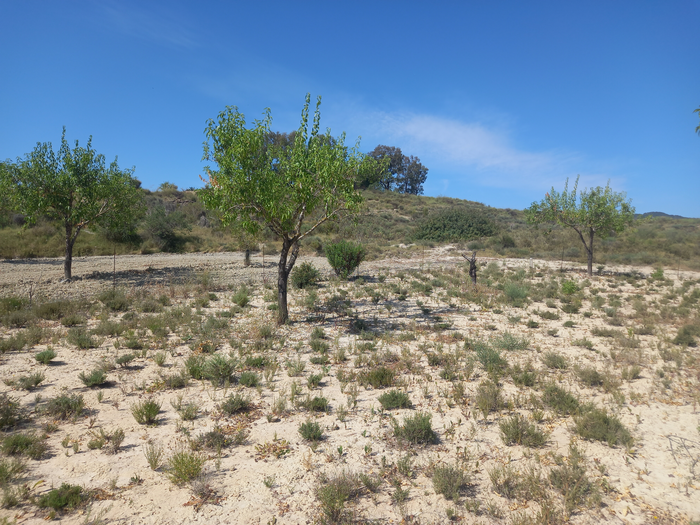The introduction of perennial crops in the alleys of Mediterranean dryland almond orchards reduces greenhouse gas emissions and increases soil carbon sequestration, according to the latest study within the Diverfarming project.
Agriculture has become a source of greenhouse gas emissions due to the intensification of farming and the high use of inputs, however, it has great potential to be a carbon sink. In fact, agricultural soils present a unique opportunity for carbon sequestration and for compensating emissions if managed adequately.
In the search for that management that helps to combat climate change and maintains (and even increases) the land’s productivity, the Diverfarming project has focused on the introduction of two perennial crops (thyme and caper) among the alleys of a dryland almond orchard in Murcia, with reduced tillage.
A team comprising researchers from the Universidad Politécnica de Cartagena (UPCT) together with the CEBAS – CSIC has evaluated the short-term effect of this intercropping compared to monocropping with tillage, regarding soil CO2 emissions and its organic carbon content. They measured the carbon dioxide and nitrogen oxide emissions for two years. The carbon dioxide emissions decreased in the intercropping systems, with regard to the practice of no-tillage in comparison to the monocropping (moreover, it was shown that the peaks in the emissions occurred after tillage on hot days, so it is recommended to avoid tilling on hot days).
The system involving the introduction of thyme was the one that led to a greater increase in the total soil organic carbon, due to the high thyme yield, in addition to the almond yield. In the case of the capers, two more years would be required to check the level of total soil organic carbon.
Considering that these crops introduced in rows between the main crop can be subsequently commercialised then the increase in economic productivity of the land is also an important factor when choosing this type of intercropping systems. In fact, in the case of thyme, up to seven litres of essential oil were obtained per hectare and without any negative effects on the almond production.
The combination of crops adapted to the soil and climate conditions to introduce in rows in the alleys of the main crop and the use of sustainable management strategies arise as effective action to obtain increases in soil organic matter in the short term, avoiding soil losses, and reducing greenhouse gas emissions. These techniques would be in line with the strategy of the European Green Deal and European climate legislation that moves toward climate neutrality in agricultural activity in 2050.
Diverfarming is a project financed by the Horizon 2020 Programme of the European Commission, within the challenge of “Food Security, Sustainable Agriculture and Forestry, Marine, Maritime and Inland Water Research and the Bioeconomy”, under agreement 728003. It counts on the participation of the Universities of Cartagena and Córdoba (Spain), Tuscia (Italy), Exeter and Portsmouth (United Kingdom), Wageningen (Netherlands), Trier (Germany), Pecs (Hungary) and ETH Zurich (Switzerland), the research centres Consiglio per la ricerca in agricoltura e l’analisi dell’economia agraria (Italy), the Consejo Superior de Investigaciones Científicas (Spain) and the Natural Resources Institute LUKE (Finland), the agrarian organisation ASAJA, and the companies Casalasco and Barilla (Italy), Arento, LogísticaDFM and Industrias David (Spain), Nieuw Bromo Van Tilburg and Ekoboerdeij de Lingehof (Netherlands), Weingut Dr. Frey (Germany), Nedel-Market KFT and Gere (Hungary) and Paavolan Kotijuustola and Polven Juustola (Finland)
Read the paper: Science of the total environment
Article source: University of Córdoba via Eurekalert
Image: The case study where Diverfarming project experiments crop diversification in almond tree. Credit: Diverfarming






